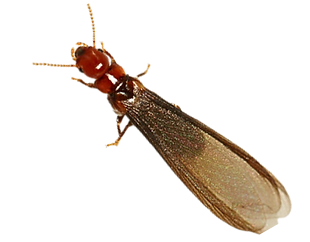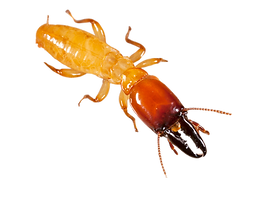PR# 9710
Call or Text: (408) 418 9152

Good Sense
Termite

Everything You Need to Know About Termites: A Homeowner’s Guide by Good Sense Termite
Northern California’s warm, temperate climate provides an ideal environment for various species of termites. These wood-destroying insects can cause extensive damage to homes and structures if left untreated. Understanding the common termite species in the region and knowing how to identify signs of infestation can help you protect your property effectively.
Common Termites in Northern California
Drywood Termites
Drywood termites are a significant threat in Northern California due to their ability to infest wood with low moisture content, including furniture and structural beams. They do not require contact with soil to survive.
-
Characteristics:
-
Creamy white to light brown in color.
-
Soldiers have large mandibles, and swarmers (reproductive termites) have wings.
-
-
Signs of Infestation:
-
Presence of small, pellet-shaped droppings (frass) near wooden structures or furniture.
-
Hollow-sounding wood when tapped.
-
Swarmers or discarded wings near windowsills or light sources.
-
.png)
-
Damage:
-
Drywood termites often create intricate tunnels within wood, weakening its structural integrity over time.
-
Drywood Swarmer Termite (Reproductive)
Subterranean Termites
Subterranean termites are the most destructive termite species in Northern California. They build colonies in soil and rely on contact with moisture to survive, often creating mud tubes to access above-ground wood
-
Characteristics:
-
Worker termites are creamy white and translucent.
-
Soldiers have large, rectangular heads with strong mandibles.
-
-
Signs of Infestation:
-
Mud tubes along foundations, walls, or crawl spaces.
-
Swarmers (winged termites) emerging from the soil, typically after rain.
-
Water-damaged-looking wood or blistered paint
-
-
Damage:
-
Subterranean termites consume cellulose in wood, causing extensive damage to foundations, support beams, and floor joists.
-

Subterranean Termite (Soldier)
Dampwood Termites
Dampwood termites thrive in areas with high moisture levels and are less common in residential settings unless there is consistent water damage. They often infest decaying wood or areas with leaks.
-
Characteristics:
-
Larger in size than other termite species.
-
Light to dark brown in color with robust bodies.
-
-
Signs of Infestation:
-
Soft, decayed wood with visible galleries or tunnels.
-
Fecal matter that appears as a smooth, packed substance inside tunnels.
-
Infested wood appears wet or spongy.
-
-
Damage:
-
Though less likely to attack sound wood, dampwood termites can cause significant damage to areas affected by water leaks or plumbing issues.
-

Dampwood Termite
How to Detect a Termite Infestation
Recognizing termite activity early can save you from costly repairs. Common indications of termite infestations include:
-
Swarmers or Discarded Wings: Reproductive termites emerge during the warmer months to start new colonies. Finding discarded wings near windows or doors is a clear sign.
-
Mud Tubes: Subterranean termites build protective tunnels from soil to wood. These are often found along foundations or crawl spaces.
-
Frass (Droppings): Drywood termites leave behind small, grainy droppings near infested areas.
-
Damaged Wood: Hollow-sounding wood, blistered surfaces, or visible tunnels indicate internal termite activity.
-
Structural Issues: Sagging floors, sticking doors, or cracks in ceilings and walls may signal advanced infestations.
Prevention Tips
To protect your Northern California home from termites:
-
Eliminate Moisture: Fix leaks and improve drainage to reduce damp areas around your property.
-
Store Wood Properly: Keep firewood and lumber away from your home’s foundation.
-
Seal Entry Points: Repair cracks in the foundation and gaps around utility lines.
-
Regular Inspections: Schedule annual termite inspections with a licensed pest control professional.
Termite FAQs
Frequently asked questions about termites
What time of year are termites most active in San Jose?
In San Jose, termite activity is highest during the warmer spring and summer months. Subterranean termites often swarm after rainfall when the weather turns warm.
How do I tell the difference between termites and flying ants?
Termites have straight antennae, a uniform waist, and equal length wings. Flying ants have bent antennae, a narrow waist, and wings of different lengths. It's always best to have a trained termite inspector help confirm what pest you are seeing.
Can termites live inside walls without being seen?
Yes. Termites often tunnel inside wood, drywall, and insulation remaining hidden until significant damage is done. We recommend regular inspections to stay ahead of the termites and to detect any hidden colonies.
What attracts termites to a house?
Termites are attracted to moisture, wood-to-soil contact, untreated wood, and warm environments. Leaky pipes, poor drainage, and wood piles near the home are common risk factors.
How quickly can termites cause serious damage?
A large termite colony can cause noticeable structural damage in as little as six months, However, because they often work silently, infestations can go unnoticed for years.
Are there natural predators that can help control termites?
Yes. Birds, ants, and certain types of beetles are natural termite predators. However, they are not reliable enough to prevent an infestations without professional help.
Do termites ever go away on their own?
No. Once a termite colony is established inside a home, it will not leave without professional intervention -- you've worked hard to make your home an inviting place! Unfortunately, the termites think so too. Termite infestations typically worsen over time. Be sure to reach out to Good Sense Termite to help evict the unwelcome guests.
Final Thoughts
Northern California homeowners face potential risks from drywood, subterranean, and dampwood termites. Understanding the behaviors and signs of these termite species is essential for maintaining your home’s structural integrity. If you suspect an infestation, contact Good Sense Termite to assess and treat the issue. We strive to provide exceptional service, clear and honest communication, and customer-focused warranties to continue protecting your home long after we've eliminated them.
Click Below to schedule a comprehensive termite inspection and begin the seamless process of protecting your home.